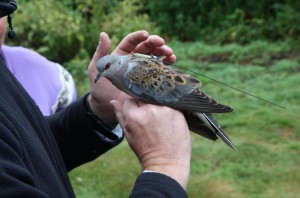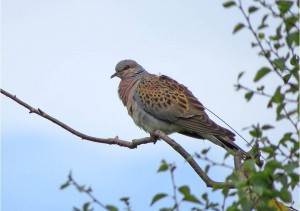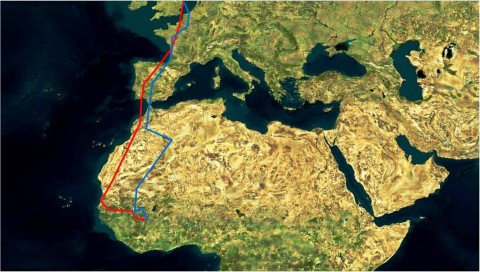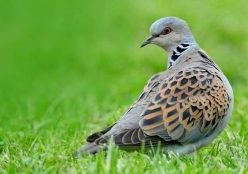Back in summer 2014, scientists from the RSPB Centre for Conservation Science fitted a Turtle Dove – named Titan – with a small, lightweight satellite tag in Suffolk before it embarked on its mammoth migration journey. Titan then completed an incredible 11,200 km to Mali in West Africa, spending the winter there before returning to Suffolk – to exactly where he originally was tagged.

What did Titan teach us?
Titan flew mostly under the cover of darkness. He flew across vast landscapes such as the Atlas Mountains, Sahara Desert and the Gulf of Cadiz. And he travelled around 500-700 km per night, flying at a maximum speed of 60 km per hour.
Titan’s outbound journey to Africa took around a month to complete. On his return the avian jet-setter spent two weeks making his way through France, initially following the Atlantic coast, before leaving from Dunkirk and touching down in Suffolk.
His outbound journey took him south from Suffolk through France and Spain before reaching Africa. He travelled from Morocco to Senegal in West Africa where he briefly stopped before reaching his main wintering area in Mali. Titan spent six months in Africa over winter compared to just four months in England!

Why track Turtle Doves?
Turtle Doves spend two thirds of their time outside the UK. Knowing where the birds go to when they’re not in the UK helps us understand where and who we need to work with along their migratory route.
Through observations and ringing recoveries, we have long known that Turtle Doves make an annual migration from their breeding grounds in Europe to their wintering grounds in Africa. But through tracking work we’ve been able to find out where birds breeding in the UK spend the winter and the routes that they take to get to sub-Saharan Africa and back again.
Titan was just one of a number of Turtle Doves that were tracked as part of our work to understand more about where these birds go and what habitats they use when they’re not in the UK. If you’d like to learn more about the findings from this research, please take a look at our blog post.








